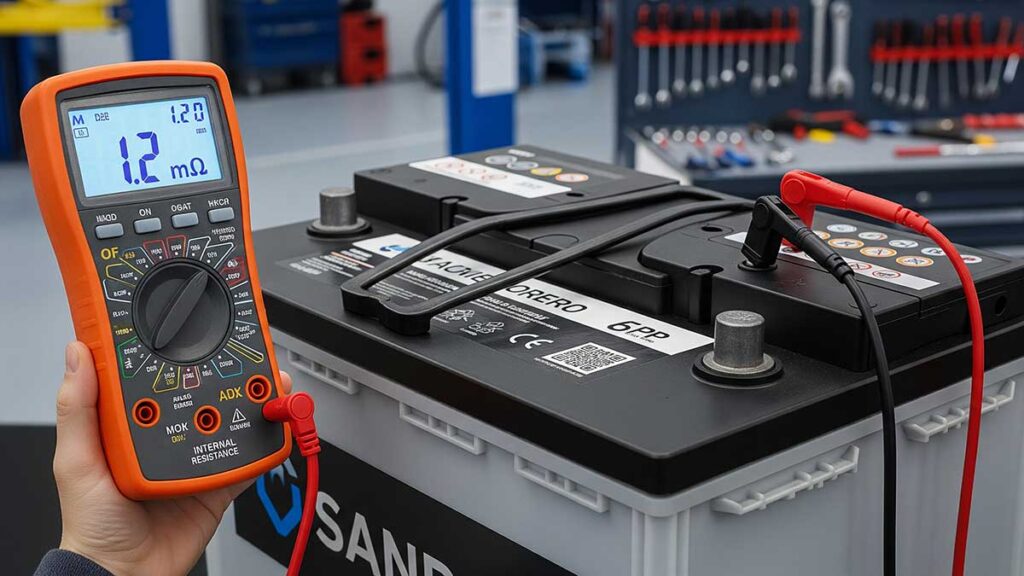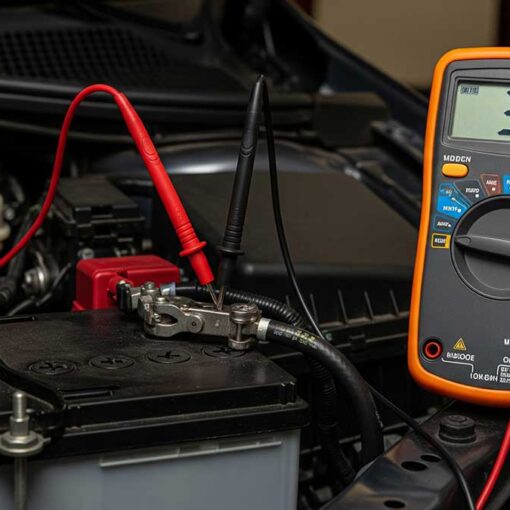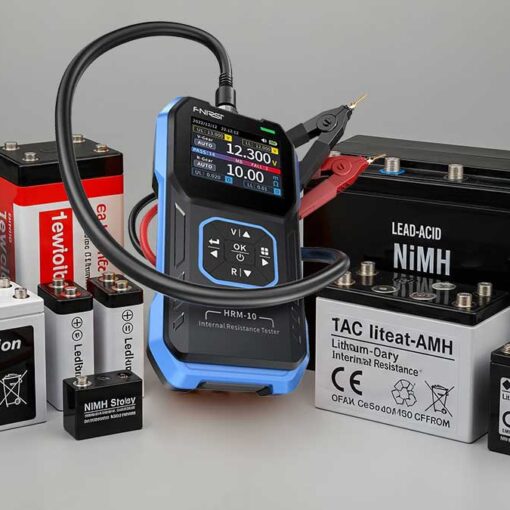
Internal resistance of the car battery
Internal resistance (Ri) is one of the most important indicators of the “health” of the battery. FNIRSI HRM-10 is one of the measuring devices that can give a very good idea of the condition of a battery.
In short: the lower the internal resistance, the better the condition of the battery. Over time and use, it increases, which limits its ability to deliver high starting current.
Does the type of battery matter?
Yes, it matters a lot. The same table cannot be used for lead-acid, gel (GEL), AGM, EFB and lithium-ion (Li-ion) batteries. Each type has a different chemistry and internal structure, which leads to completely different internal resistance values.
Therefore, it is impossible to create a universal table for all types. Below are indicative tables for the most common types.
Important: For the most accurate assessment, always compare the measured value with the specifications of a brand new battery of the same model, if available. A more reliable method is to monitor how the resistance of your battery increases over time. A 50-100% increase in resistance from its original value is usually a sure sign that the battery is nearing the end of its life.
12V Automotive Battery Chart (Lead Acid: EFB, AGM)
For automotive batteries, it is more practical to relate the internal resistance to the cranking current (CCA – Cold Cranking Amps) rather than the capacity (Ah). More powerful batteries with a higher CCA have lower internal resistance.
| Cranking Current (CCA) | Condition: Excellent (New) | Condition: Good | Condition: For Replacement |
| 300 – 500 CCA | 5.0 – 8.0 mΩ | 8.0 – 12.0 mΩ | > 12.0 mΩ |
| 500 – 700 CCA | 4.0 – 6.0 mΩ | 6.0 – 9.0 mΩ | > 9.0 mΩ |
| 700 – 900 CCA | < 4.0 mΩ | 4.0 – 7.0 mΩ | > 7.0 mΩ |
Table for Small Lead Acid Batteries (SLA/VRLA)
These are encapsulated batteries, often used in UPS devices, alarm systems, strollers, etc.
| Capacity (Ah) | Voltage | Condition: Good | Condition: For Replacement |
| 0.8 – 1.3 Ah | 12V | < 150 mΩ | > 250 mΩ |
| 4 – 7 Ah | 12V | < 30 mΩ | > 45 mΩ |
| 12 – 18 Ah | 12V | < 15 mΩ | > 25 mΩ |
| 24 – 35 Ah | 12V | < 10 mΩ | > 18 mΩ |
Lithium-ion (Li-ion/Li-Po) Battery Table
There is a huge variety here, but here are some general guidelines. “Power” cells (for high current, e.g. in screwdrivers) have lower resistance than “Capacity” cells (for high capacity, e.g. in laptops).
| Type / Capacity | Condition: Excellent (New) | Condition: Good | Condition: For Replacement |
| Li-ion 18650 (Power) | 12 – 25 mΩ | 25 – 40 mΩ | > 40 mΩ |
| Li-ion 18650 (Capacity) | 25 – 40 mΩ | 40 – 70 mΩ | > 70 mΩ |
| Li-Po Battery (Hobby) | 2 – 6 mΩ per cell | 7 – 12 mΩ per cell | > 15 mΩ per cell |
| Small Li-ion (phones, etc.) | 50 – 150 mΩ | 150 – 250 mΩ | > 300 mΩ |
How to interpret the results? 💡
- Charge the battery: Always test a fully charged battery. At low charge the internal resistance is higher and will mislead you.
- Temperature: Measure at room temperature (20-25°C). At lower temperatures, the resistance increases.
- Good contact: Make sure the clamps of the device make clean and solid contact with the battery terminals. Oxidation or contamination can distort the result.
Please share your experience in a comment. It will be interesting for everyone.

